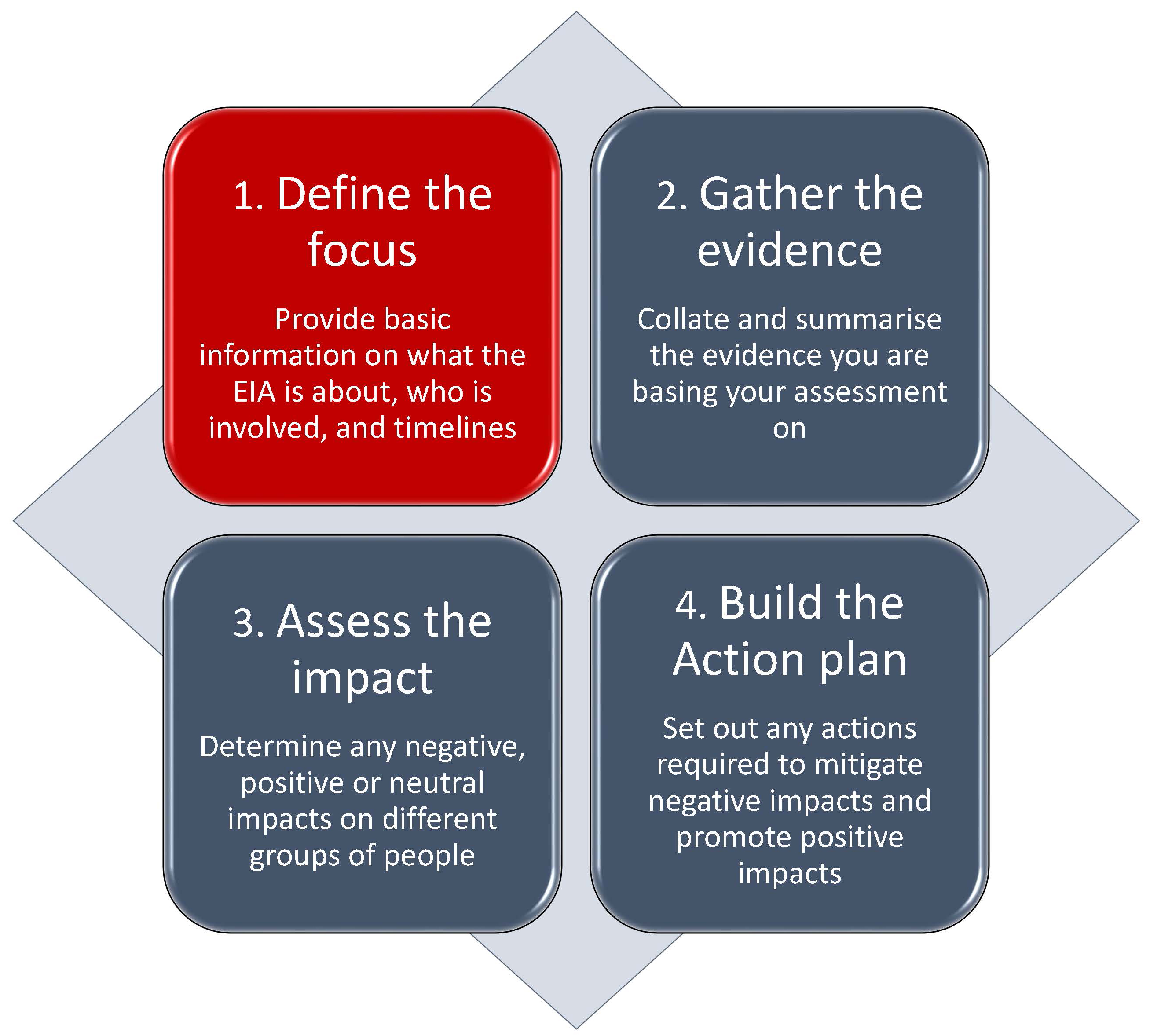EIA Stage 1: Define the focus


In Stage 1 you provide basic information on what the EIA is about, who is responsible for it, and the timelines involved
This should include information on what is being proposed, the aims and objectives of the new policy / process / activity / change, and how it will be achieved. Clearly define the scope of the policy / process / activity / change, as well as that out of scope, which will help to establish relevance to equality and potential impact on some groups.
- Where relevant, you can identify any specific aspects that the EIA is focusing on (e.g. if it is focusing on a particular part of a wider service, system or plan).
- You are also asked to identify who will be affected. Consider this in a broad sense. For example, it may be a policy focused on students, but its application may involve and impact on colleagues and external partners.
- Additionally, you are asked to identify if the EIA is for something new or something that is being revised or reviewed. If it is new, then your analysis will be predictive – looking forward and anticipating what negative or positive impacts on EDI there might be. If it is for something that is being revised, reviewed or changed, the analysis will be both retrospective – looking back at what impacts there have been – and predictive – looking forward to potential future impacts, particularly in regard to any changes being made.
You could include additional information such as:
- Any other staff members working on the policy or project
- Any timescales for your policy or project
- Any upcoming working groups or committees where the EIA might need to be reviewed alongside the policy or project
If it is concluded that there is no relevance to equality and diversity, you do not need to continue with the EIA. You will, however, need to monitor and review the policy regularly.




